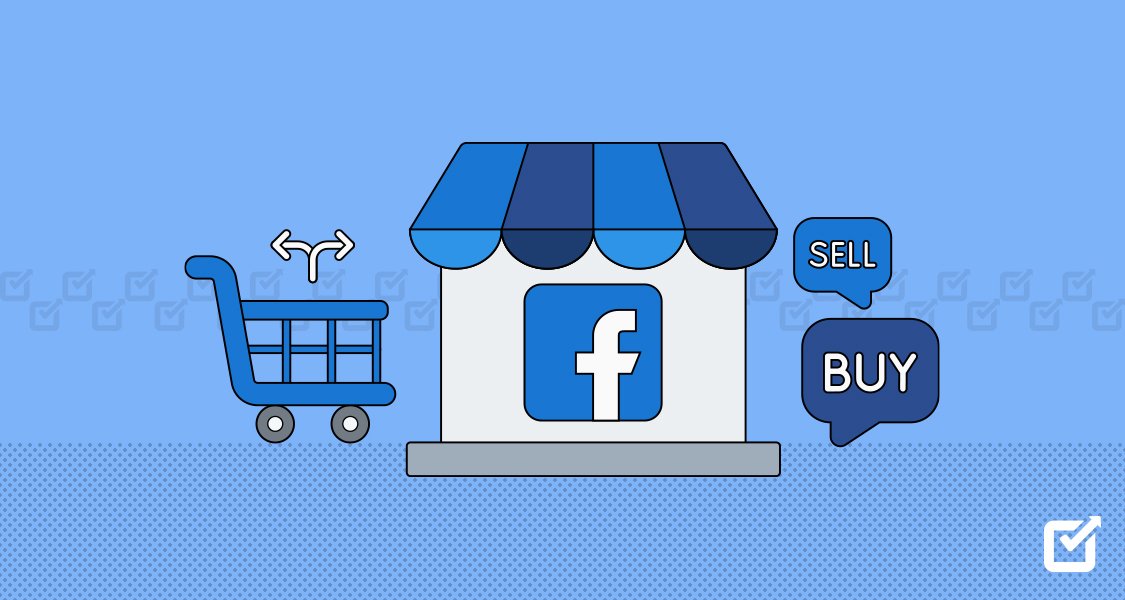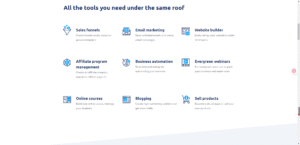Launched in 2016, Facebook Marketplace has rapidly grown into one of the most popular platforms for buying and selling goods online. Unlike traditional e-commerce websites, Marketplace is integrated directly into Facebook, allowing millions of users to connect with local buyers and sellers instantly.
In 2025, it has become more than just a place to sell second-hand items — small businesses, resellers, and entrepreneurs are now using it to reach wider audiences without needing a dedicated online store. With its simple interface, built-in trust system through Facebook profiles, and zero listing fees, Marketplace provides an accessible entry point for anyone looking to sell online.
For buyers, Marketplace offers a convenient way to browse thousands of items in their area, from furniture and electronics to cars and rental properties. For sellers, it provides a fast, low-cost way to reach potential customers who are already spending time on Facebook.
Table of Contents
How to Create and Set Up a Facebook Marketplace Account
Getting started on Facebook Marketplace is simple, but optimizing your account from the beginning ensures better visibility and credibility. Whether you’re a casual seller or a small business owner, setting up your Marketplace account properly is the first step toward success.
Step 1: Log in to Your Facebook Account
To use Marketplace, you need an active Facebook account. Simply log in through the Facebook app or website. On the main navigation menu, you’ll see the Marketplace icon (a small shop symbol).
Step 2: Access Marketplace
Click on the Marketplace icon, and you’ll be directed to the main buying and selling hub. From here, you can browse items or begin listing your own.
Step 3: Update Your Profile Information
Buyers are more likely to trust sellers with complete and authentic profiles. Make sure your:
- Profile photo is clear and professional.
- Name matches your real identity.
- Location is accurate for local sales.
Step 4: Set Up Seller Preferences
Go to the settings within Marketplace to:
- Select your default location and delivery radius.
- Choose your preferred payment methods (e.g., cash, PayPal, or local transfer apps).
- Enable notifications so you never miss buyer inquiries.
Step 5: Verify Your Account for Trustworthiness
While not mandatory, verifying your account with phone number or email adds credibility. This step reduces buyer hesitation and increases your chances of closing sales.
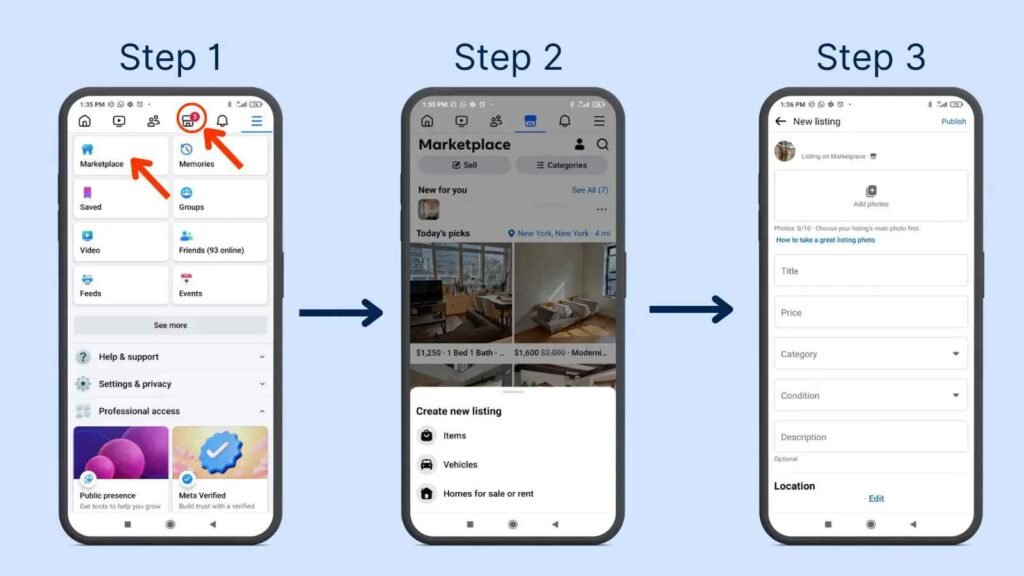
How to List and Sell Items
Once your account is ready, the next step is to create your first product listing. A clear, professional listing not only attracts more buyers but also helps your item stand out in a crowded marketplace.
Step 1: Start a New Listing
Click the “Create New Listing” button. You’ll be asked to choose the type of item you’re selling:
- Items for Sale
- Vehicles
- Property Rentals
- Job Openings
Step 2: Upload High-Quality Photos
Images are the first thing buyers notice. Use bright, well-lit pictures from multiple angles. Avoid blurry or cluttered backgrounds to make your product the main focus.
Step 3: Write a Compelling Title and Description
- Title: Keep it short, specific, and accurate (e.g., “iPhone 13 Pro, Excellent Condition”).
- Description: Include product details, condition, size, and any extras. Be transparent about flaws to build trust.
Step 4: Set the Right Price
Research similar items to find the best price range. Pricing slightly lower than competitors can help you sell faster, but don’t undervalue your item.
Step 5: Choose Delivery and Payment Options
Decide if you want to offer local pickup, shipping, or both. For payments, clarify whether you prefer cash, bank transfer, or a digital wallet.
Step 6: Publish and Monitor
Once published, your item will be visible to nearby buyers. Respond quickly to inquiries, as fast communication often makes the difference between closing a sale or losing a buyer.
Best-Selling Items in 2025
Understanding what people are most likely to buy can dramatically increase your chances of making sales. Certain product categories consistently perform well because they meet everyday needs or represent high-demand trends.
1. Furniture and Home Decor
Used and affordable furniture is always in demand. Couches, dining tables, shelves, and even decorative pieces sell quickly, especially if they are modern or lightly used.
2. Electronics and Gadgets
Smartphones, laptops, tablets, and gaming consoles remain top sellers. Accessories such as headphones, chargers, and smartwatches also attract a large audience.
3. Vehicles and Auto Parts
Cars, motorcycles, and bicycles are highly searched items. Even spare parts like tires, rims, and car batteries can generate significant interest.
4. Clothing and Fashion Items
Second-hand clothes, branded shoes, and luxury handbags continue to dominate the resale market. Sustainability trends have encouraged more buyers to choose pre-owned fashion.
5. Baby and Kids’ Products
Strollers, cribs, toys, and children’s clothing are popular because kids outgrow items quickly, creating a constant cycle of supply and demand.
6. Sports and Fitness Equipment
With more people focused on health and wellness, treadmills, weights, yoga mats, and bicycles are increasingly sought after.
7. Home Improvement Tools
Power drills, gardening tools, and DIY kits sell well as people invest in improving their living spaces.
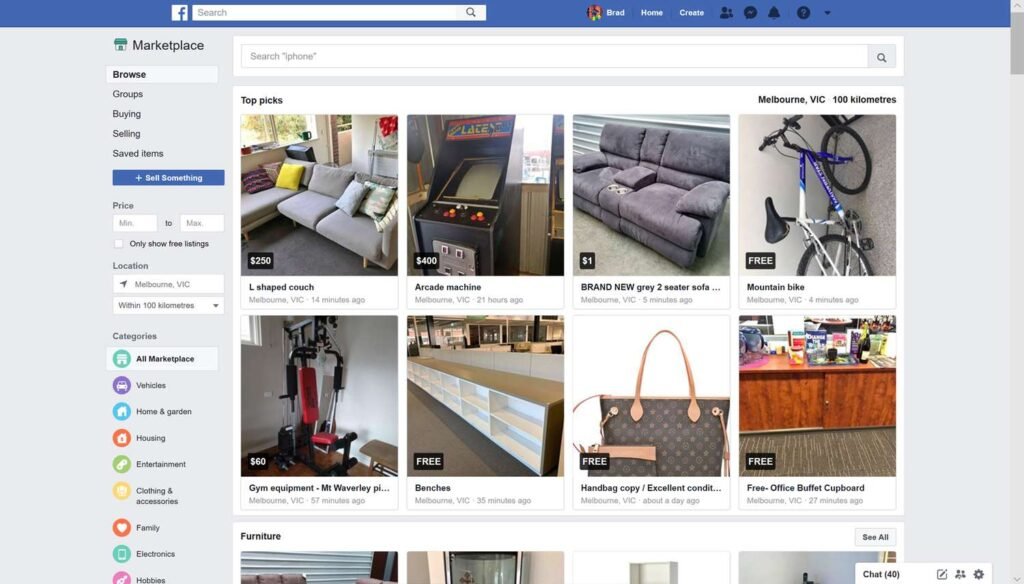
Tips to Boost Sales
Standing out in a crowded marketplace takes more than just listing your items. With a few proven strategies, you can significantly increase your chances of selling faster and at better prices.
1. Use Professional-Quality Photos
Clear, well-lit images make a huge difference. Take photos from different angles, and if possible, stage the product in a clean, uncluttered environment.
2. Write Honest and Detailed Descriptions
The more details you provide, the fewer questions buyers need to ask. Include brand, size, condition, model number, and any minor defects to build trust.
3. Price Strategically
- Research similar items to see the going rate.
- Consider setting your price slightly above your target so you have room for negotiation.
- Offer bundle deals (e.g., “buy 2, get 1 free”) to attract buyers.
4. Refresh Old Listings
If your item hasn’t sold after a few weeks, update the photos, adjust the price, or repost it to bring it back to the top of search results.
5. Respond Quickly to Messages
Fast replies show professionalism and increase the likelihood of closing a deal. Many buyers will move on if they don’t hear back within a few hours.
6. Leverage Social Sharing
Share your listing in local groups or with your personal network. Social proof can lead to faster sales.
7. Offer Flexible Pickup and Payment Options
Buyers appreciate convenience. Offering multiple payment methods and flexible pickup times can make your listing more appealing.
Buying on Facebook Marketplace: How to Find the Best Deals
For buyers, the platform offers endless opportunities to save money on quality items. However, knowing how to search effectively and negotiate can make the difference between an average purchase and a great deal.
1. Use Filters to Narrow Down Searches
- Apply location filters to focus on sellers near you.
- Sort by price range to stay within your budget.
- Use the “Condition” filter to find items marked as “New” or “Like New.”
2. Search with Specific Keywords
Instead of broad terms like “phone,” try “iPhone 13 Pro unlocked.” The more precise your search, the better your chances of finding exactly what you want.
3. Check Listings Frequently
New items appear every day, and good deals go fast. Make it a habit to check the platform multiple times a day for fresh opportunities.
4. Compare Prices Before Buying
Don’t jump at the first listing you see. Look at similar items in your area to make sure you’re getting a fair deal.
5. Negotiate Politely
Most sellers expect negotiation. Offer slightly below the asking price, but stay respectful. A friendly tone increases your chances of getting a discount.
6. Verify Seller Credibility
Check the seller’s profile, ratings, and past activity. A complete profile with positive reviews is usually more reliable.
7. Act Quickly on Hot Deals
If you see an item priced significantly lower than others, message the seller immediately. Waiting too long may cost you the deal.
Boost your traffic and sales —click here
Safety Tips for Using Marketplace
While online buying and selling can be convenient, it’s important to stay cautious. Scams and unsafe transactions are rare but possible, so knowing how to protect yourself ensures a safer experience.
1. Meet in Public Places
Always arrange to meet in well-lit, busy locations such as shopping centers, cafés, or police-designated “safe exchange zones.” Avoid meeting at private homes whenever possible.
2. Bring a Friend
If the item is large or the meeting place feels unfamiliar, bring someone with you. Having a second person adds a layer of safety.
3. Use Secure Payment Methods
Prefer cash for in-person transactions. If paying digitally, use trusted platforms like PayPal or bank transfers that provide buyer protection. Avoid wiring money or using gift cards.
4. Inspect Items Before Paying
Check the product thoroughly to make sure it matches the description. Test electronics, look for damage, and confirm any important details before completing the deal.
5. Watch Out for Red Flags
Be cautious if the price is too good to be true, if the seller pressures you to act immediately, or if they refuse to meet in person.
6. Protect Your Personal Information
Never share sensitive details such as your home address, ID numbers, or banking login information. Keep communication within the platform whenever possible.
7. Trust Your Instincts
If something feels off, walk away. Your safety is worth more than any deal.
Marketplace vs Other Platforms (eBay, Craigslist, Amazon)
With so many online platforms available, sellers and buyers often wonder how Marketplace compares to other popular options. Each platform has its own strengths, and the best choice depends on your goals.
Marketplace vs eBay
- Facebook Marketplace: Best for local, quick transactions with no listing fees. Items often sell faster because buyers are nearby.
- eBay: Ideal for reaching a global audience. It allows auctions and shipping, but charges listing and final value fees. Great for rare, collectible, or specialty items.
Marketplace vs Craigslist
- Facebook Marketplace: Integrated with social profiles, making it easier to assess a buyer or seller’s credibility. User interface is modern and mobile-friendly.
- Craigslist: Still popular for classifieds like jobs, rentals, and services. However, its design is outdated and less secure, with fewer trust features.
Marketplace vs Amazon
- Facebook Marketplace: Geared toward second-hand and local sales. No storage or shipping requirements for sellers.
- Amazon: Perfect for professional sellers and new products. Offers Prime shipping, fulfillment services, and access to a massive global audience — but requires fees and strict seller policies.
Which One Should You Choose?
- If you want to sell items locally and quickly → Facebook Marketplace is your best bet.
- If you’re looking to sell globally and manage shipping → eBay works well.
- If you’re selling services, rentals, or want a simple listing system → Craigslist still has a niche.
- If you run a business and want to scale → Amazon provides the most professional ecosystem.
Facebook Marketplace for Small Businesses
What began as a tool for casual sellers has evolved into a powerful channel for small businesses. Entrepreneurs and local shops are now using it not just to clear out inventory, but also to expand their customer base and build brand awareness.
1. Low-Cost Entry Point
Unlike traditional e-commerce platforms, there are no upfront listing fees. This makes it an excellent starting point for small businesses with limited budgets.
2. Local Audience Targeting
The platform naturally connects sellers with nearby buyers. For small businesses, this means reaching local customers who are more likely to purchase and return for repeat business.
3. Enhanced Trust Through Social Profiles
Potential customers can see a seller’s profile, reviews, and community activity. This social element helps small businesses build trust faster than on anonymous platforms.
4. Opportunity to Showcase Products
From handmade crafts to surplus stock, small businesses can test new products with little risk. Quick feedback from local buyers helps entrepreneurs refine their offerings.
5. Integration with Paid Ads
Businesses can boost their listings with Facebook Ads to reach a wider audience beyond their immediate area. This blend of organic visibility and paid promotion can be very cost-effective.
6. Brand Visibility and Customer Engagement
Beyond selling, businesses can use Marketplace as a touchpoint to guide buyers toward their main website, physical store, or social media pages — creating a full customer journey.
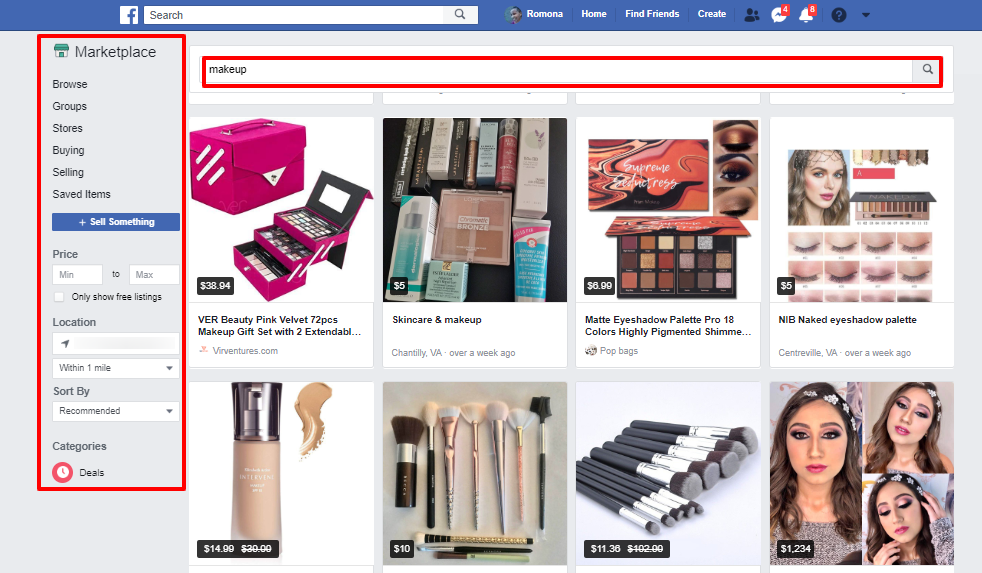
FAQs About Marketplace
1. Do I need to pay fees to list items?
No, creating listings is free. However, if you choose to promote your listings with ads, there will be advertising costs.
2. Can I sell internationally?
The platform is primarily designed for local transactions. While some sellers arrange shipping, it’s not meant to be a global marketplace like eBay or Amazon.
3. Do I need a business account to sell?
No, anyone with a personal account can list items. That said, small businesses can benefit from linking their business page for added credibility.
4. What types of items are not allowed?
Prohibited items include weapons, alcohol, tobacco, counterfeit goods, animals, and illegal products. Listings that violate these rules are quickly removed.
5. How do I know if a buyer or seller is trustworthy?
Check their profile, reviews, and how long they’ve been active. Avoid dealing with accounts that look new or suspicious.
6. Can I return items purchased here?
Unlike traditional e-commerce sites, there’s no official return policy. Buyers and sellers must agree on returns or refunds privately.
7. How do payments work?
Most transactions are completed in cash during in-person meetups. Some sellers accept digital payments, but always use secure methods.
8. Is there customer support if something goes wrong?
Yes, Facebook provides a reporting system where you can flag suspicious listings or accounts. However, direct support for disputes is limited compared to platforms like Amazon.
Conclusion: Is Facebook Marketplace Worth It in 2025?
In 2025, online buying and selling continue to evolve, but this platform remains a strong contender for both casual users and small businesses. Its combination of zero listing fees, built-in trust through social profiles, and access to a massive user base makes it one of the easiest ways to connect buyers and sellers locally.
For individual sellers, it’s an excellent place to declutter, make extra income, and find quick deals without needing advanced e-commerce knowledge. For small businesses, it offers a cost-effective channel to test products, reach local customers, and build brand visibility without the overhead of a full online store.
Of course, challenges exist — such as limited buyer protection, the risk of scams, and competition from other platforms. However, with the right precautions and strategies, the benefits often outweigh the drawbacks.
If your goal is to sell quickly, build local trust, or expand your customer base at minimal cost, then yes — it’s absolutely worth considering in 2025.

